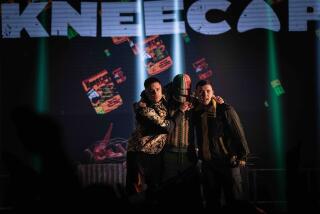Emigrants and Exiles : IRELAND AND THE IRISH EXODUS TO NORTH AMERICA by Kerby A. Miller (Oxford University: $35; 640 pp.)
“Emigrants and Exiles” is a remarkable achievement. The subject of Irish immigration has often been treated before from one point of view or another, but never, so far as I know, on such a comprehensive scale and with such an amount of information gleaned from both sides of the Atlantic.
This is a very readable book. Prof. Kerby A. Miller never forgets that history is about people. Over and over again, he brings his narrative to life by quoting from contemporary letters and statements, or describing incidents that illustrate his point. The number of sources for these examples is greatly increased by his knowledge of the Irish language, and the material he has tapped from this adds an invaluable dimension to his understanding of the motives and experiences of the Irish people.
He begins with an account of the historical and sociological causes that led to the huge emigration from Ireland in the 19th Century. The small tenant farmers detested their landlords and saw the whole landlord class as Protestant and English. Emigration was thought of as forced exile, never as the choice of a better life, and the blame for it was laid squarely on bad government and an unfair system of land tenure.
Famines were regular occurrences, and resentment had been building up long before the worst one in 1847. The Irish never wanted to emigrate, even when it was obviously the best or the only course open to them. They loved their homeland, and preferred a bare existence there to all the promised gold of the New World. The phenomenon known as an “American Wake,” a bitter-sweet party given at the emigrant’s departure, was partly designed to make the emigrants feel guilty.
The chapter entitled “The Culture of Exile” is illuminating and contains a splendid account of the position of the Catholic Church in relation to emigration. This chapter also comes as near as one can to giving the reasons for the attachment of the Irish to their beautiful country.
These reasons seemed inadequate to outsiders, who praised the virtues of thrift and hard work and pointed out the benefits that would come from a complete change of environment. They were wasting their breath, as Miller points out, since the story goes back as far as the 6th Century, if not further. He quotes a poem attributed to St. Columcille in his exile:
Take my blessing back with you;
My heart is broken in my breast;
If I should happen to meet death
It will be because I have loved Ireland too well.
Miller quite rightly sees that this attitude has changed very little over the centuries. One of the strengths of the book is the analysis of the Irish character that hates change and is deeply attached to home and family and well-worn customs, and believes that the daily texture of Irish life is the best in the world and can’t be re-created elsewhere. Money was no temptation to such people. Thrift was not an admired virtue.
Letters from emigrants who had settled in America were often encouraging. An Irishman wrote from Ohio: “This country I intend to be my home. I have sufficient sense to know when I am well off. I do not want to be a fellow sufferer in the ruins of Ireland.” The California gold strikes in 1849 gave people the idea that the streets of America were paved with gold, and one ballad put it:
Let Erin’s sons and daughters fair
Now for the promised land prepare.
Employment is in plenty there.
On beef and mutton you can fare.
Other evidence contradicted this rosy picture. Many letters described a life of misery, on subsistence wages, in an alien and often hostile setting, and some of these emigrants expressed their determination to return to Ireland to end their days, when they could afford it.
One who achieved this was Michael MacGowan, a Donegal man who returned home and bought a farm with his savings. He dictated his memoirs in Irish to his son-in-law in his old age. Miller has drawn on this valuable book for information about conditions both in Ireland and in California, where MacGowan became a miner.
Culture shock didn’t upset MacGowan, but it was a hazard as bad as poverty to the immigrants. This is amply illustrated in a great many of the letters, but one down-to-earth Ulsterman warned his brother: “Nobody prospers here that thinks they could do better at home. When you make up your mind to leave Ireland, do it for good and all.”
Even those who took this advice never really forgot their homeland. It was they who formed such strong pressure groups that, as Eamon de Valera said to me once, “Without the Irish in America, there would be no Ireland.” Irish-American clubs and societies kept alive their feelings of loyalty to the old country, and the sight of democracy at work in America boosted their confidence. Not only did they contribute money for the Irish War of Independence, but some fought beside their cousins in Ireland.
The appendix, notes, bibliography and index make this book a valuable contribution to scholarship. For the general reader interested in Ireland, it’s a mine of fascinating information.
More to Read
Sign up for our Book Club newsletter
Get the latest news, events and more from the Los Angeles Times Book Club, and help us get L.A. reading and talking.
You may occasionally receive promotional content from the Los Angeles Times.






